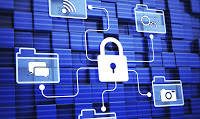PowerPoint is the most popular program which allows users to create, edit and show beautiful presentation with the help of slides. Using power points presentation tool is a good way, as it offers some distinct advantages. When I was in first years I prepared PowerPoint presentation without having any ideas but after learning ICT module, gain vast knowledge of designing effective PowerPoint presentation.
In order to have effective PowerPoint presentation text should big and it can be visible from two meter away and text should simple no more than 6 lines and 7 words per slide. Regarding picture, usually arts work may distract the audience and used it when it’s necessary and if the picture is related to context.
Transition is annoying, not enhancing and ‘appear’ and ‘disappear’ are better and keep animation simple and it also visible from 2 meters away. Even capital letters are difficult and in order to make simple and easier used both upper and lower case letter. Sanserif, normal, bold fonts are clearer and used number for list with sequence. Even sounds only used when absolutely necessary.
Below are the two comparisons between my two PowerPoint I prepare during first years and final year. So through these comparisons, I could easily judge or make out how how much I learnt to make PowerPoint. No matter how you are intelligent, if your PowerPoint is not match with designing principle, the audience will not able to convenience your information and so will distract their concentration.
PowerPoint I prepared after learning designing principle of PowerPoint presentation. Not only learnt designing principle, even i learnt few basic ideas of animanation by using powerpoint preasentation.
 |















